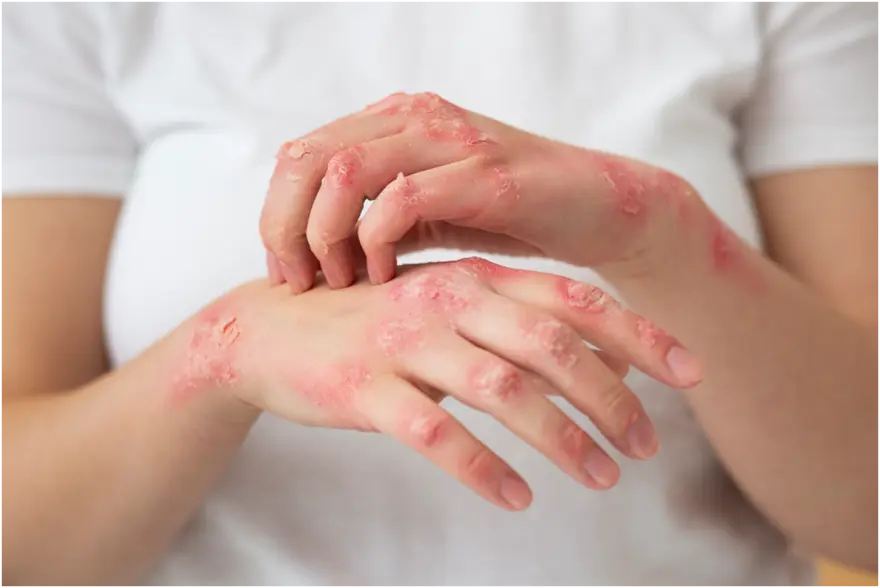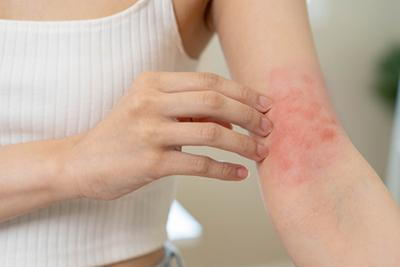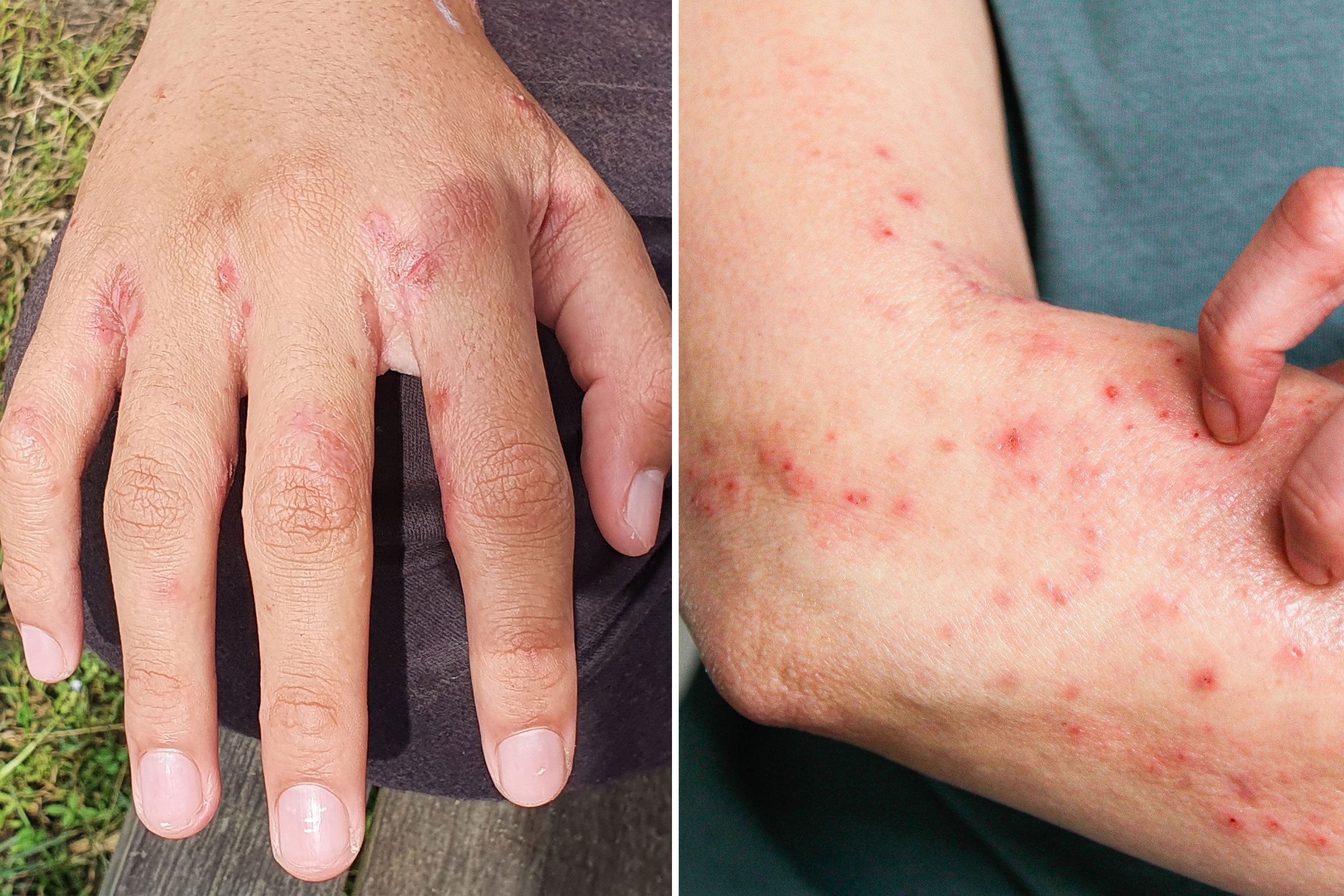In recent months, the United Kingdom has reported a significant rise in cases of scabies, a contagious skin condition that is increasingly affecting individuals across various age groups. While scabies is not classified as a life-threatening illness, early identification and treatment are essential to prevent the condition from spreading and causing further complications.
Health professionals and organizations such as the National Health Service (NHS) and the Royal College of General Practitioners (RCGP) have issued advisories urging the public not to dismiss the appearance of red spots or persistent itching, particularly if symptoms worsen over time. This article explains what scabies is, how to identify the symptoms, who is most at risk, and what steps should be taken to manage the condition effectively.

What Is Scabies?
Scabies is a skin infestation caused by tiny mites known as Sarcoptes scabiei. These mites burrow into the outer layers of the skin, where they lay eggs, causing an allergic reaction that leads to intense itching and a visible rash. The condition is highly contagious and can be transmitted through prolonged skin-to-skin contact, as well as through infested clothing, towels, or bedding.
Scabies can affect anyone, regardless of hygiene, age, or lifestyle, and is commonly found in group settings such as care homes, hospitals, and schools, where close contact occurs frequently.
Signs and Symptoms of Scabies
The most common symptoms of scabies include:
-
Intense itching, particularly at night
-
Small red spots, pimples, or a rash that may resemble eczema
-
Thin, irregular burrow tracks on the skin, caused by the mites
-
Sores or crusts that develop due to scratching
According to the NHS, the rash typically appears in certain areas of the body including:
-
Between the fingers
-
Around the wrists and elbows
-
Under the arms
-
Around the waist and groin
-
On the buttocks and lower abdomen
In young children, elderly individuals, or people with weakened immune systems, scabies can also affect areas not usually involved, such as:
-
The head and neck
-
Palms of the hands
-
Soles of the feet
A more severe form known as crusted scabies (formerly referred to as Norwegian scabies) can occur in individuals with compromised immune function. This variant is highly contagious and presents with thick crusts of skin that contain large numbers of mites and eggs.

Scabies in the UK: Recent Trends and Data
The UK is currently facing what health authorities describe as one of the largest outbreaks of scabies in recent years. Data from NHS hospitals indicate that over 3,600 cases were diagnosed across the country within a recent monitoring period. This figure represents a notable increase above the five-year average, particularly in regions such as the North of England.
According to Professor Kamila Hawthorne, Chair of the Royal College of General Practitioners, many cases may go unreported due to the social stigma associated with the condition. This stigma often leads individuals to delay seeking medical treatment, which can contribute to further community transmission and complications.
Prof. Hawthorne emphasized that while scabies is not considered a dangerous condition, it is important to manage it promptly. If left untreated, scabies can result in secondary skin infections caused by excessive scratching. These infections may require antibiotic treatment and, in some cases, can worsen existing skin conditions such as eczema or psoriasis.
Why Prompt Treatment Matters
One of the key concerns around the ongoing scabies outbreak is the delay in diagnosis and treatment. Due to the highly contagious nature of the mites, a person with scabies can easily spread it to others, especially within households or communal environments.
Treating scabies involves using topical creams or lotions containing permethrin or benzyl benzoate, which are available by prescription. The entire body from the neck down (and the scalp in certain cases) must be treated. Close contacts and family members are often advised to undergo treatment simultaneously—even if they do not yet show symptoms—to prevent reinfestation.

Addressing the Shortage of Scabies Treatment
Another factor contributing to the current public health challenge is the shortage of scabies medications, particularly permethrin-based treatments. Pharmacists and general practitioners in some parts of the UK have reported difficulty obtaining sufficient stock to meet growing demand.
According to a BBC News report, this shortage has affected both NHS prescriptions and over-the-counter availability in certain areas. Health officials are actively working with suppliers and pharmacies to ensure that treatments are restocked and distributed efficiently.
In the meantime, people who suspect they may have scabies are advised to consult a general practitioner (GP) for evaluation and guidance, rather than self-diagnosing or delaying care.
Who Is Most at Risk?
Scabies can affect anyone, but some populations are more vulnerable:
-
Children under 10 years old, especially in daycare or school settings
-
Elderly individuals, particularly those in long-term care facilities
-
People with weakened immune systems, such as those undergoing chemotherapy or living with chronic illnesses
-
Healthcare workers, due to regular close contact with patients
-
Household members and caregivers of individuals with scabies
In these groups, the symptoms may present differently or more severely, and early treatment is even more critical to reduce risk and complications.

Preventing the Spread of Scabies
Effective prevention and control measures can help reduce the risk of transmission:
-
Avoid close physical contact with individuals known to have scabies until they have completed treatment.
-
Wash clothing, bedding, and towels used by affected individuals in hot water and dry on a high heat cycle.
-
Vacuum furniture and carpets to remove mites from the environment.
-
Treat all members of a household simultaneously, even if symptoms are not yet visible.
-
Practice good hygiene, although it’s important to note that scabies is not related to poor cleanliness.
When to See a Doctor
If you notice persistent red spots, itching—especially at night—or unusual skin irritation in common areas like the wrists, fingers, or waistline, it is important to seek medical advice promptly. A GP can confirm the diagnosis and recommend an effective treatment plan.
Ignoring symptoms can not only delay recovery but also risk passing the infection to others in your community or household.

Final Thoughts
Scabies is a common but often misunderstood skin condition that can be effectively managed with early diagnosis and appropriate treatment. In light of the recent rise in cases across the UK, awareness and timely action are more important than ever.
If you or someone in your household notices small red spots or persistent itching, do not ignore these signs. Consult your healthcare provider, follow medical advice, and take necessary steps to prevent further spread. With proper treatment and precautions, most people recover fully within a few weeks.
